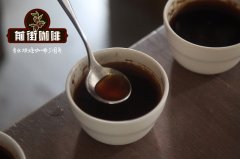Flavor changes caused by caramelization during baking

Professional coffee knowledge exchange more coffee bean information please follow the coffee workshop (Wechat official account cafe_style)
Sucrose, which accounts for about 6% of soybean weight, is the main raw material of coking sugar. Sucrose is about 130 ℃-170 ℃. Sucrose is pyrolyzed into low molecular weight monosaccharides, glucose and fructose, and releases aroma and carbon dioxide. But with the furnace temperature rising to more than 180 ℃, these molecular weight monosaccharides continue to aggregate and concentrate to form darker medium molecular weight caramel components with caramel aroma. Caramelization has been carried out to a little over 200 ℃, is coming to an end, and finally completely carbonized.
Therefore, as the temperature increases, caramelization produces different compounds with different odors, which is a very complex chemical reaction that scientists do not fully understand. Basically, the aroma of caramelization is the most attractive between medium baking and second explosion, which is why the baking degree of Agtorn#55 cup test is based on the degree of caramelization of SCAA cup. Once in the deep baking after the second explosion, the flavor is dominated by the more elusive drying effect.
Important Notice :
前街咖啡 FrontStreet Coffee has moved to new addredd:
FrontStreet Coffee Address: 315,Donghua East Road,GuangZhou
Tel:020 38364473
- Prev

Analysis on the color change of raw coffee beans during roasting one of the reasons for the formation of coffee bitterness
Professional coffee knowledge exchange more coffee bean information please follow the coffee workshop (Wechat official account cafe_style) We all know that the color of raw coffee beans is light green, dark green, dark green, surface yellowing, the color of raw coffee beans is also different, but the color of roasted beans all turn brown, why is that? It comes from oligosaccharides and ammonia.
- Next

The difference between "Mena reaction" and "caramelization" in the baking process
Professional coffee knowledge exchange more coffee bean information please follow the coffee workshop (Wechat official account cafe_style) Mena reaction wins caramelization Mena reaction refers to a series of monosaccharide carbohydrates (glucose, fructose, maltose, arabinose and lactose) and proteins (amino acids) through a series of degradation and polymerization, the color will also become darker, 1912 by the French scientist Mena
Related
- Beginners will see the "Coffee pull flower" guide!
- What is the difference between ice blog purified milk and ordinary milk coffee?
- Why is the Philippines the largest producer of crops in Liberia?
- For coffee extraction, should the fine powder be retained?
- How does extracted espresso fill pressed powder? How much strength does it take to press the powder?
- How to make jasmine cold extract coffee? Is the jasmine + latte good?
- Will this little toy really make the coffee taste better? How does Lily Drip affect coffee extraction?
- Will the action of slapping the filter cup also affect coffee extraction?
- What's the difference between powder-to-water ratio and powder-to-liquid ratio?
- What is the Ethiopian local species? What does it have to do with Heirloom native species?

